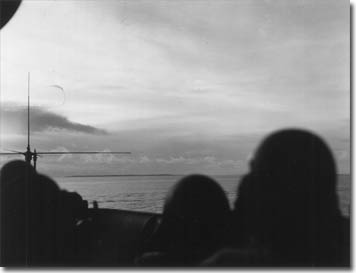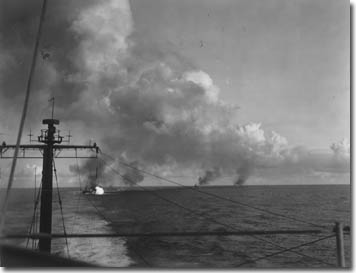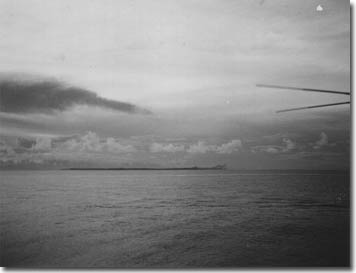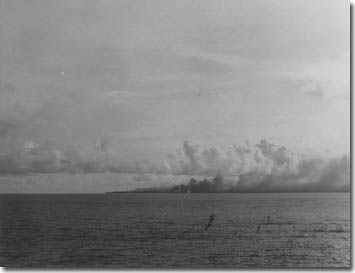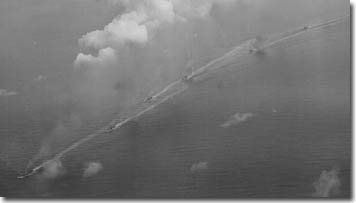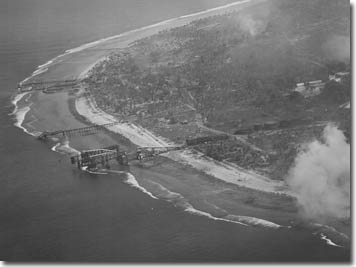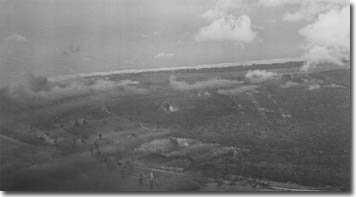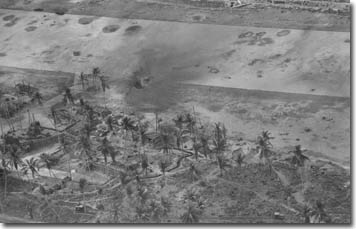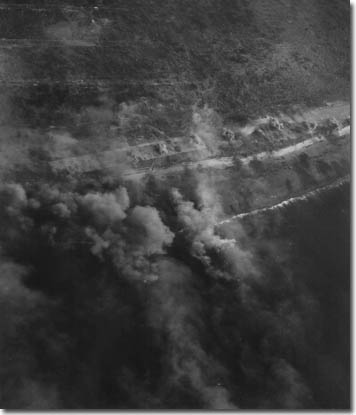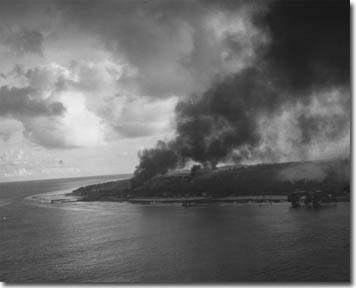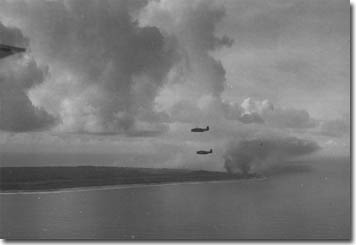| BB57/A16-3 ( 00214 ) |
U.S.S. SOUTH DAKOTA | (90-Sg) |
S-E-C-R-E-T |
c/o Fleet Post Office San Francisco, 5, Calif. 13 December 1943. |
| From: | Commanding Officer. Commander In Chief. | |
| To : | Pacific Fleet. Commander Battleships. | |
| Via : | Pacific Fleet. Commander Battleship Division NINE. | |
| Subject: | Nauru Island, Bombardment of on 8 December 1943. | |
| Reference: | (a) | ComBatPac Bombardment Plan 1-43 of December 6, 1943. |
| Enclosure: | (A) | Track chart.(No longer attached) |
| (B) | Photographs taken from spotting plane. | |
| (C) | Information requested in ComBatPac despatch 101845. | |
| (D) | Photographs of topographical montage.(No longer attached) | |
1. On the morning of December 8, 1943, west longitude date, this ship participated in a task group bombardment and bombing of the Japanese held island of Nauru. Ships in company in the bombardment group consisted of the battleships WASHINGTON (ComBatPac), NORTH CAROLINA, INDIANA (ComBatDiv 8), MASSACHUSETTS, ALABAMA and destroyers IZARD (ComDesRon 46), BURNS, CHARETTS, BOYD (ComDesDiv 92), LAND and CONNER. Rear Admiral Lee in the WASHINGTON was the OTC for the operation. The carrier group consisted of the carriers BUNKER HILL and MONTEREY and destroyers STACK, STERRETT (ComDesDiv 15), BROWN, BRADFORD and COWELL.
2. The following specific tasks were assigned to the SOUTH DAKOTA in accordance with reference (a):
(a) Fire one nine gun 16-inch salvo into a designated area.
(b) Cover two 500 yard squares with 63 16-inch H.C. projectiles over a fifteen minute period.
(c) At the end of the first fifteen minute period to take an additional area of 500 yards square under fire. A total of 63 projectiles and a time of 15 minutes were provided for this phase.
(d) Cover one 500 yard square with 400 5-inch projectiles.
(e) Destroy all targets of opportunity.
3. A review of the observations made and the data obtained indicates that these tasks were properly accomplished.
(a) In accordance with reference (a) the nine gun 16-inch salvo was fired with a deflection spread of 300 yards between turrets and a range spread of 600 yards between the high and low guns of each turret. The basis for the size of the spread was the information contained
- 1 -
